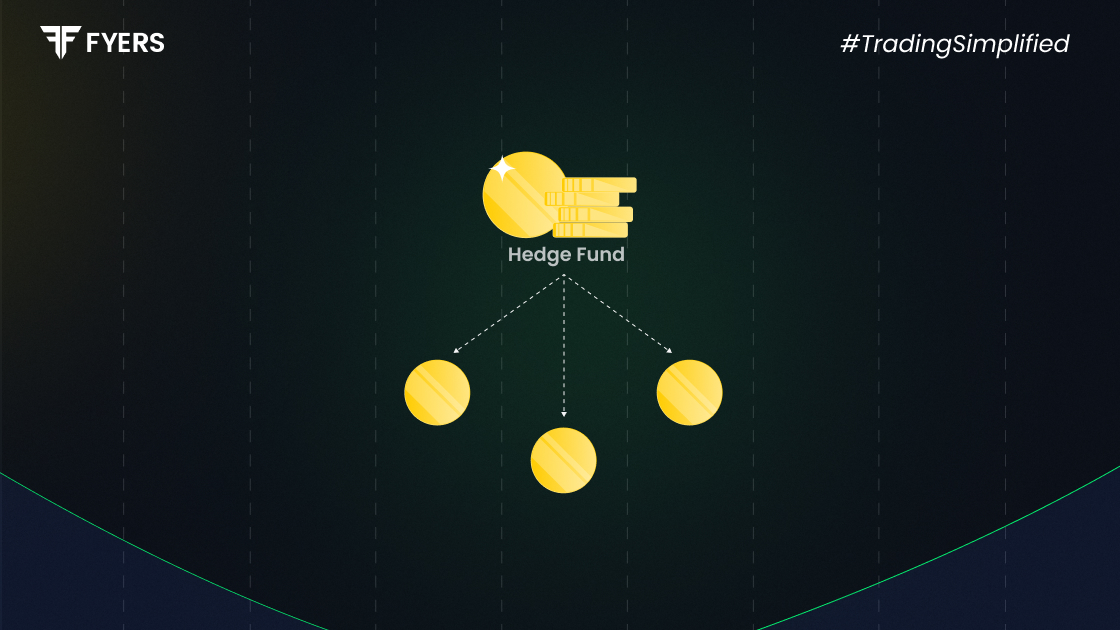

 28 Jul, 2025
28 Jul, 2025
 5 mins read
5 mins read

Hedge funds are often seen as a mysterious part of the finance world. Known for their bold moves and potential for high returns, they’re a popular choice for wealthy investors. But what is a hedge fund, really? And how is it different from something like a mutual fund?
If you're curious about hedge funds in India, this guide breaks down what they are, how hedge funds work, the different hedge fund strategies, who can invest, and the pros and cons involved.
A hedge fund is a private investment fund that pools money from a few wealthy individuals or institutions. These funds then use a wide range of strategies - some simple, some very complex - to try and make strong returns.
Unlike mutual funds, hedge funds don’t have to follow many of the usual rules. This gives them more freedom to invest in almost anything - stocks, bonds, currencies, derivatives, and more. The main goal is to earn profits in both rising and falling markets. That’s why they’re called “hedge” funds - they aim to protect against losses.
Here’s a basic look at how hedge funds work:
Investors need to put in a large minimum amount, often ₹1 crore in India.
A fund manager uses strategies like short selling, leverage, arbitrage, and derivatives to try and grow the investment.
Fees are high: usually a fixed management fee (e.g., 2%) and a performance fee (e.g., 20% of profits).
Hedge funds are less liquid - you can’t always pull your money out quickly due to lock-in periods.
These funds are typically offered under Category III Alternative Investment Funds (AIFs), regulated by SEBI.
What makes hedge funds unique is their flexible and aggressive investment approach. Popular hedge fund strategies include:
Long/Short Equity: Buying undervalued stocks and betting against overvalued ones.
Market Neutral: Balancing buys and sells to avoid overall market risk.
Global Macro: Investing based on big-picture trends like inflation, interest rates, or geopolitical events.
Event-Driven: Making profits from corporate changes like mergers or bankruptcies.
Quantitative: Using computer models and data to make investment decisions.
Each hedge fund investment strategy is designed to take advantage of different market situations.
Let’s look at the major types of hedge funds, based on how they invest:
|
Type of Hedge Fund |
Strategy Focus |
|---|---|
|
Equity Hedge Funds |
Focus on stocks – both buying and short-selling |
|
Macro Hedge Funds |
Invest based on global events and trends |
|
Event-Driven Funds |
Target companies involved in mergers, takeovers |
|
Relative Value Funds |
Profit from small price differences between assets |
|
Fund of Funds |
Invest in multiple other hedge funds |
Hedge funds in India are not for the average investor. They’re designed for:
High-Net-Worth Individuals (HNIs)
Institutional investors
People with high risk tolerance
Investors looking for diversification beyond stocks and mutual funds
SEBI rules require a minimum investment of ₹1 crore, so hedge funds are limited to a select group of wealthy and experienced investors.
While the benefits of hedge funds include high return potential and diverse strategies, there are also serious risks:
Market Risk: You could lose money if markets move the wrong way.
Leverage Risk: Borrowing to invest can magnify both gains and losses.
Liquidity Risk: Your money may be locked in for a while.
Regulatory Risk: Rule changes could affect fund performance.
Transparency Risk: Hedge funds don’t have to share as much info as mutual funds, so you may not always know what’s going on.
These risks of hedge funds make them suitable only for those who truly understand the trade-offs.
Let’s talk about hedge fund taxation in India:
Category III AIFs are taxed at the fund level, like a business.
Investors pay tax based on the type of income received - interest, dividends, or capital gains.
Usually, the income is treated as business income and taxed as per your income slab.
Tax rules can be complex and may change, so it’s wise to talk to a tax advisor before investing.
Here’s how to invest in hedge funds in India if you’re eligible:
Know Your Risk Profile: Hedge funds can be volatile and aren’t meant for conservative investors.
Choose a Fund Manager: Look for well-known names with strong past performance.
Complete the KYC Process: Provide ID proof, PAN card, and income details.
Meet the Investment Minimum: You’ll need at least ₹1 crore to get started.
Understand the Terms: Check fees, lock-in periods, and fund strategy before signing anything.
Some well-known firms that offer hedge fund-like products (Category III AIFs) in India include:
IIFL Asset Management
Motilal Oswal Alternative Investment Advisors
Avendus Capital
ASK Investment Managers
These funds don’t advertise like mutual funds, so you may need to connect through wealth managers or financial advisors.
Hedge funds are powerful investment tools - but they’re not for everyone. For those who qualify, they offer diversification, customised strategies, and the potential for big gains. But they also carry high risks, strict entry requirements, and complex tax rules.
If you’re still wondering what is a hedge fund, just remember this: it’s a high-stakes, high-reward investment option best suited for those who know the game and can afford to play it.
It’s a private fund that uses different strategies to try and make high returns - often by taking on more risk than usual investments.
Yes, they are. They fall under SEBI’s Category III AIFs.
Only high-net-worth individuals and institutional investors with a minimum ₹1 crore to invest.
SEBI requires a minimum investment of ₹1 crore per investor.
Calculate your Net P&L after deducting all the charges like Tax, Brokerage, etc.
Find your required margin.
Calculate the average price you paid for a stock and determine your total cost.
Estimate your investment growth. Calculate potential returns on one-time investments.
Forecast your investment returns. Understand potential growth with regular contributions.